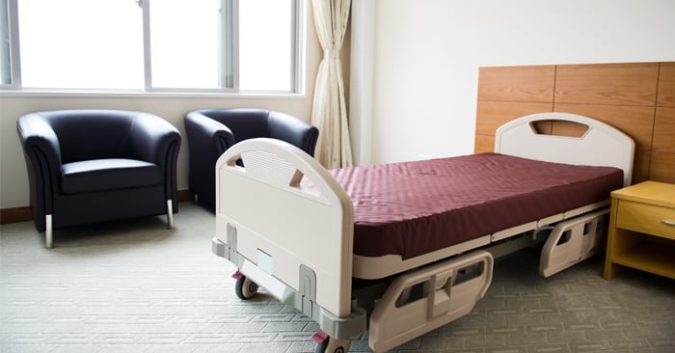When San Antonio-based nursing home Chandler Estate closed in early 2018 after 40 years in business, about 30 staff members lost their jobs. Worse, more than 40 elderly residents were forced to relocate.
But the board of directors had no choice. Their revenue simply couldn’t cover the costs of the facility’s steep drop in occupancy rate.
For several years, Chandler Estate had filled only 70 percent of its beds, which put operators and residents alike under enormous pressure. And as the New York Times reports, the same problem threatens nursing homes across the U.S.
The Downward Trend of Nursing Home Occupancy
According to the most recent survey from the National Investment Center for Seniors Housing and Care, nearly 1 in 5 beds in U.S. nursing homes now goes unused. The occupancy rate (which amounts to 82 percent) is at its lowest since 2011 (then nearly 87 percent) when the center began tracking the data.
Five percent might not seem like much, but the drop is more significant than it sounds, said Bill Kauffman, the center’s senior principal.
“The industry as a whole is under pressure, and some operators are having difficulty,” he said.
Data from 2015 paint an even bleaker picture. That year, the National Center for Health Statistics reported that occupancy fell as low as a third in some states. Even now, according to the New York Times, some 200 to 300 nursing homes close every year. The 31 largest metropolitan markets have about 13,500 fewer nursing home beds than they did in late 2005, while the number of residents also shrunk from 1.48 million in 2000 to 1.36 million in 2015.
At the same time, the American population is aging at an unprecedented pace. By 2060, the population of retirees is expected to more than double. You would think nursing homes are grappling with surging demand rather than empty beds. How can this be happening?
The Problem: Growing Financial Strain
In an interview with The Times, Kauffman noted that nursing homes are under pressure to control costs.
One major bottleneck is Medicare, which generally only pays for a patient’s short-term rehabilitative care in nursing homes after they are discharged from hospital. (Medicaid covers long-term.) What Medicare won’t cover are the patients admitted to hospital “under observation,” or patients who have surgeries in outpatient centers, for example. Medicare Advantage plans, which now cover a third of Medicare beneficiaries, also play a role.
“They have a keen interest in lowering costs, so maybe they divert people from skilled nursing to home care,” Kauffman explained. “If you do go to a nursing facility, instead of a 30-day stay, maybe the plan wants the patient out in 17 days.”
And home-care alternatives pose mounting competition for nursing homes. More and more assisted living centers, continuing care retirement communities (CCRCs), and other home- or community-based options are allowing elders to live independently, for which they opt whenever possible. So, what’s driving the increase in alternatives?
It could be federal policy, according to The Times. In 2005, Congress flipped the proportion of Medicaid that flowed to nursing homes (90 percent) and home-based services (10 percent) so that nursing homes now only get 43 percent.
But it could also be that American families have wised up to nursing homes’ poor standards of care. Now that 30 percent of the nation’s nursing homes have been cited for neglect and abuse (and ironically, face further costs from nursing home lawsuit settlements) it’s become common sense for families to keep their loved ones close.
Where Will All the Residents Go?
Earlier this year, a report from the U.S. Government Accountability Office found that Medicaid covers assisted living for 330,000 people. Medicaid’s Money Follows the Person program has moved more than 75,000 residents from nursing homes to community settings.
This is great news for consumers, who can keep their loved ones safe from nursing homes’ potentially low standards of care. But what about those who live in – or have no choice but to move to – nursing homes?
Another recent Times report found more than a few holes in Nursing Home Compare’s Five-Star Quality Rating System. So on the 1 hand, at least families can use data on occupancy (and staffing, thanks to federal rules requiring Nursing Home Compare to publish employees’ time cards) to decide whether a prospective nursing home provides quality care.
“The best facilities still have 100 percent occupancy and waiting lists,” said Nicholas Castle, a health policy researcher at the University of Pittsburgh. “That’s how you know they’re good.”
However, families should also be wary of for-profit nursing homes’ relentless and tight-lipped pursuit of revenue. Even nursing homes with lower occupancies can turn a profit by, for example, attracting more patients for short-term rehab to rake in higher Medicare reimbursements. The Times highlighted only a few more tactics nursing homes use – opening separate home care agencies, accepting sicker patients, converting shared rooms to individual ones to attract residents who value privacy – all with the goal of scoring higher reimbursement rates. The care of vulnerable elders comes second.
What’s more, said Robyn Grant from the National Consumer Voice for Quality Long-Term Care: “From what I’ve observed, as occupancy goes down, so will staff levels.”
Nursing home staffing levels are already stretched critically thin and 1 of the biggest drivers of poor-quality care and nursing home abuse lawsuits. If occupancy falls, your loved one may well get a private room. But will they wait longer for responses to their call button?
It will be interesting to see whether occupancy picks up when baby boomers enter their 80s. In the meantime, when considering what’s best for your elderly loved one, be sure to consider all your options.
